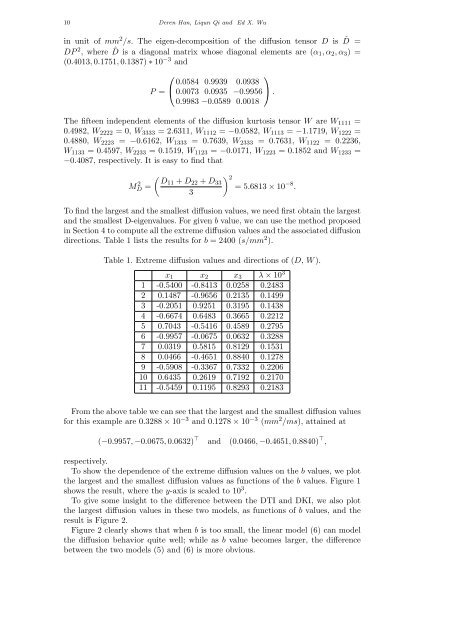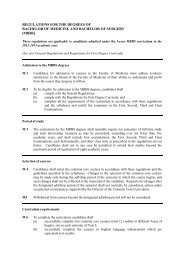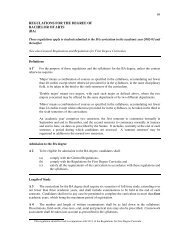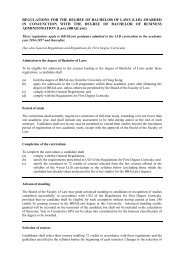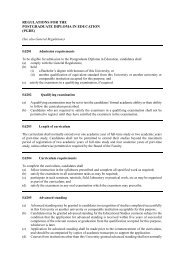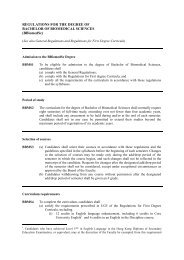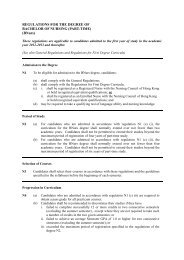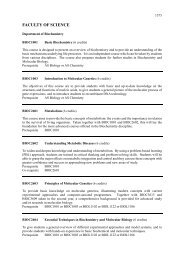RESEARCH ARTICLE Extreme Diffusion Values for non-Gaussian ...
RESEARCH ARTICLE Extreme Diffusion Values for non-Gaussian ...
RESEARCH ARTICLE Extreme Diffusion Values for non-Gaussian ...
You also want an ePaper? Increase the reach of your titles
YUMPU automatically turns print PDFs into web optimized ePapers that Google loves.
10 Deren Han, Liqun Qi and Ed X. Wu<br />
in unit of mm 2 /s. The eigen-decomposition of the diffusion tensor D is ˆD =<br />
DP 2 , where ˆD is a diagonal matrix whose diagonal elements are (α 1 , α 2 , α 3 ) =<br />
(0.4013, 0.1751, 0.1387) ∗ 10 −3 and<br />
⎛<br />
⎞<br />
0.0584 0.9939 0.0938<br />
P = ⎝ 0.0073 0.0935 −0.9956 ⎠ .<br />
0.9983 −0.0589 0.0018<br />
The fifteen independent elements of the diffusion kurtosis tensor W are W 1111 =<br />
0.4982, W 2222 = 0, W 3333 = 2.6311, W 1112 = −0.0582, W 1113 = −1.1719, W 1222 =<br />
0.4880, W 2223 = −0.6162, W 1333 = 0.7639, W 2333 = 0.7631, W 1122 = 0.2236,<br />
W 1133 = 0.4597, W 2233 = 0.1519, W 1123 = −0.0171, W 1223 = 0.1852 and W 1233 =<br />
−0.4087, respectively. It is easy to find that<br />
( )<br />
MD 2 D11 + D 22 + D 2<br />
33<br />
=<br />
= 5.6813 × 10 −8 .<br />
3<br />
To find the largest and the smallest diffusion values, we need first obtain the largest<br />
and the smallest D-eigenvalues. For given b value, we can use the method proposed<br />
in Section 4 to compute all the extreme diffusion values and the associated diffusion<br />
directions. Table 1 lists the results <strong>for</strong> b = 2400 (s/mm 2 ).<br />
Table 1. <strong>Extreme</strong> diffusion values and directions of (D, W ).<br />
x 1 x 2 x 3 λ × 10 3<br />
1 -0.5400 -0.8413 0.0258 0.2483<br />
2 0.1487 -0.9656 0.2135 0.1499<br />
3 -0.2051 0.9251 0.3195 0.1438<br />
4 -0.6674 0.6483 0.3665 0.2212<br />
5 0.7043 -0.5416 0.4589 0.2795<br />
6 -0.9957 -0.0675 0.0632 0.3288<br />
7 0.0319 0.5815 0.8129 0.1531<br />
8 0.0466 -0.4651 0.8840 0.1278<br />
9 -0.5908 -0.3367 0.7332 0.2206<br />
10 0.6435 0.2619 0.7192 0.2170<br />
11 -0.5459 0.1195 0.8293 0.2183<br />
From the above table we can see that the largest and the smallest diffusion values<br />
<strong>for</strong> this example are 0.3288 × 10 −3 and 0.1278 × 10 −3 (mm 2 /ms), attained at<br />
(−0.9957, −0.0675, 0.0632) ⊤ and (0.0466, −0.4651, 0.8840) ⊤ ,<br />
respectively.<br />
To show the dependence of the extreme diffusion values on the b values, we plot<br />
the largest and the smallest diffusion values as functions of the b values. Figure 1<br />
shows the result, where the y-axis is scaled to 10 3 .<br />
To give some insight to the difference between the DTI and DKI, we also plot<br />
the largest diffusion values in these two models, as functions of b values, and the<br />
result is Figure 2.<br />
Figure 2 clearly shows that when b is too small, the linear model (6) can model<br />
the diffusion behavior quite well; while as b value becomes larger, the difference<br />
between the two models (5) and (6) is more obvious.


